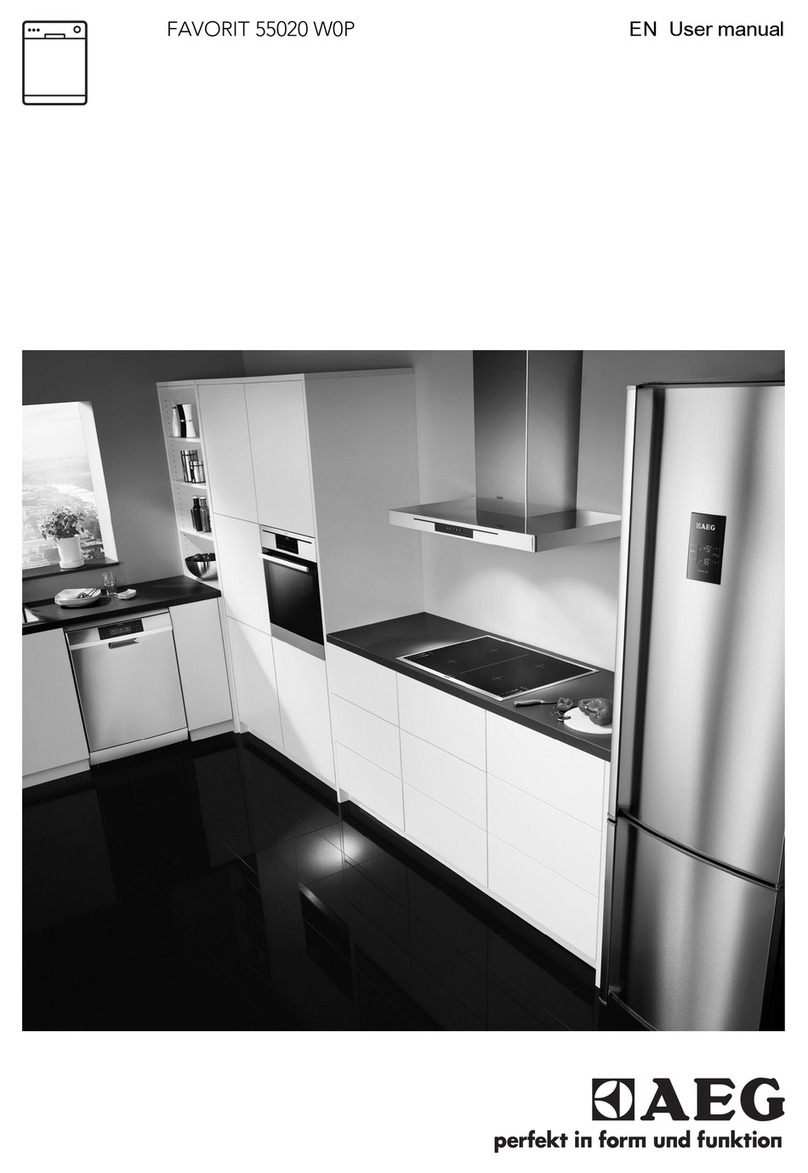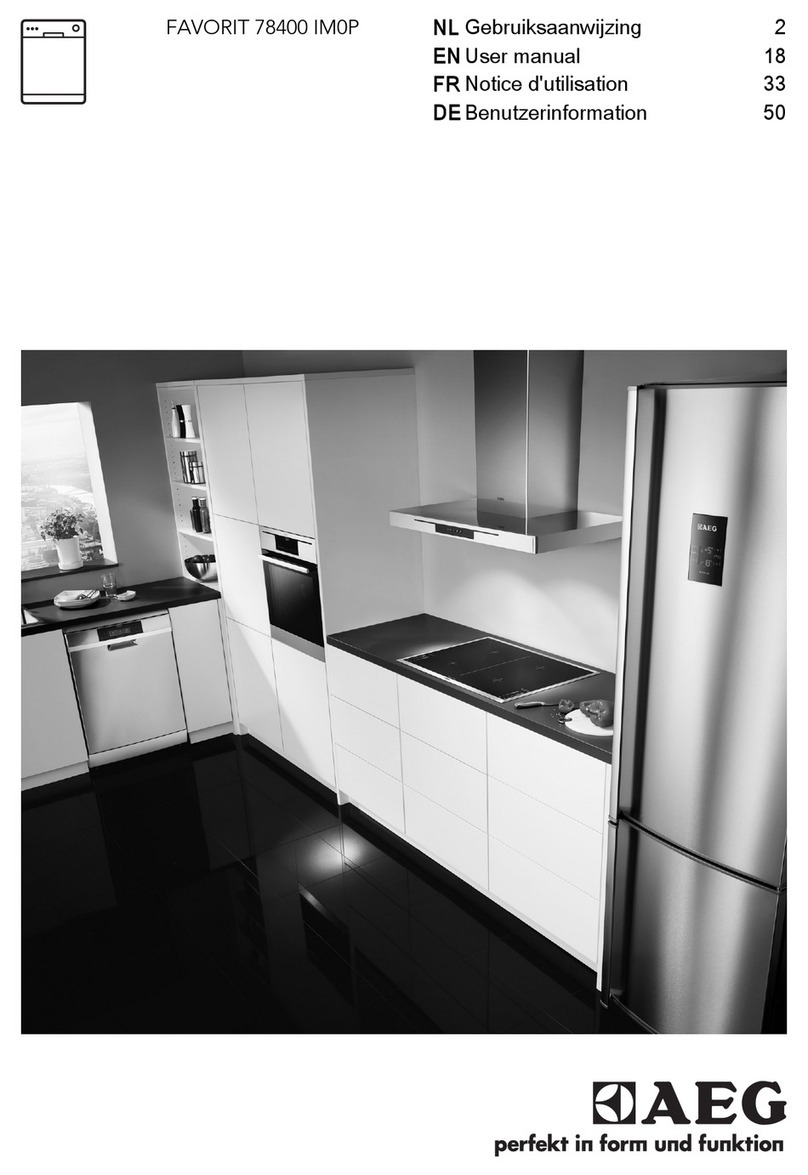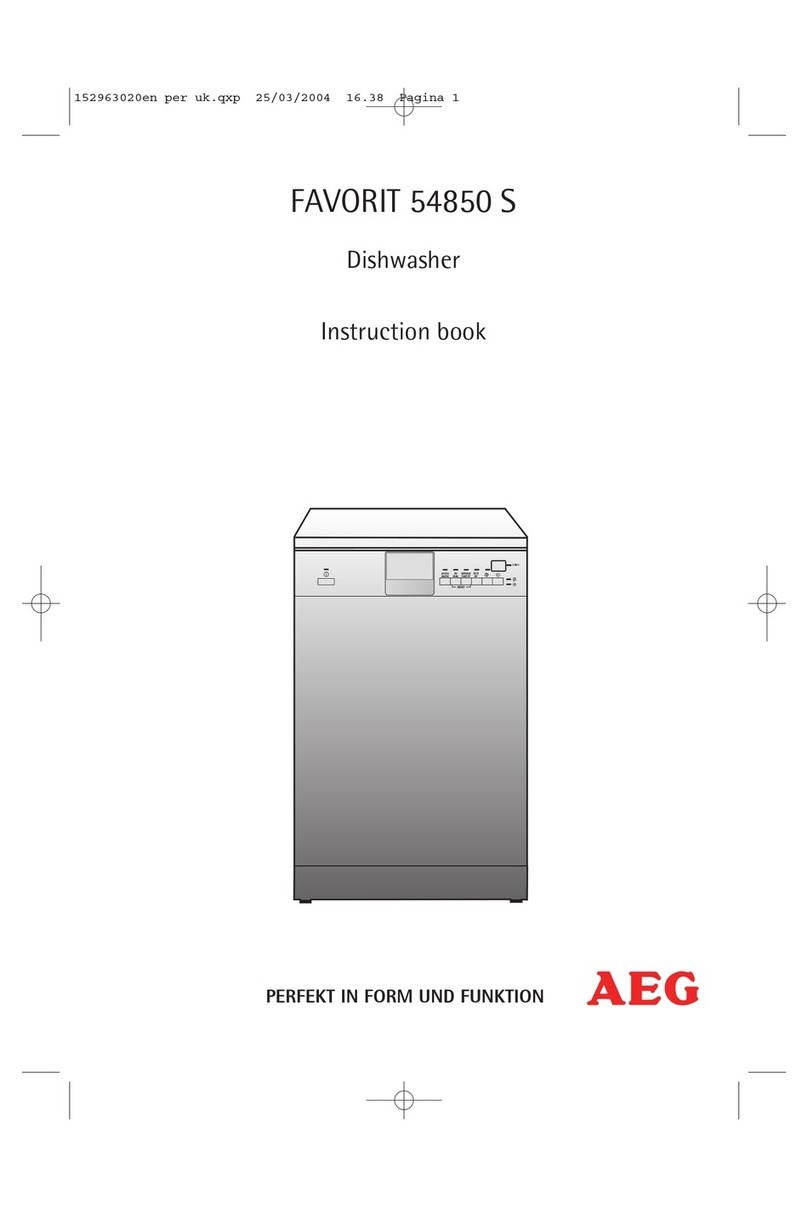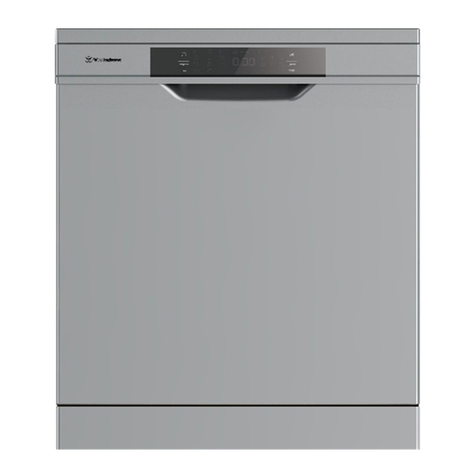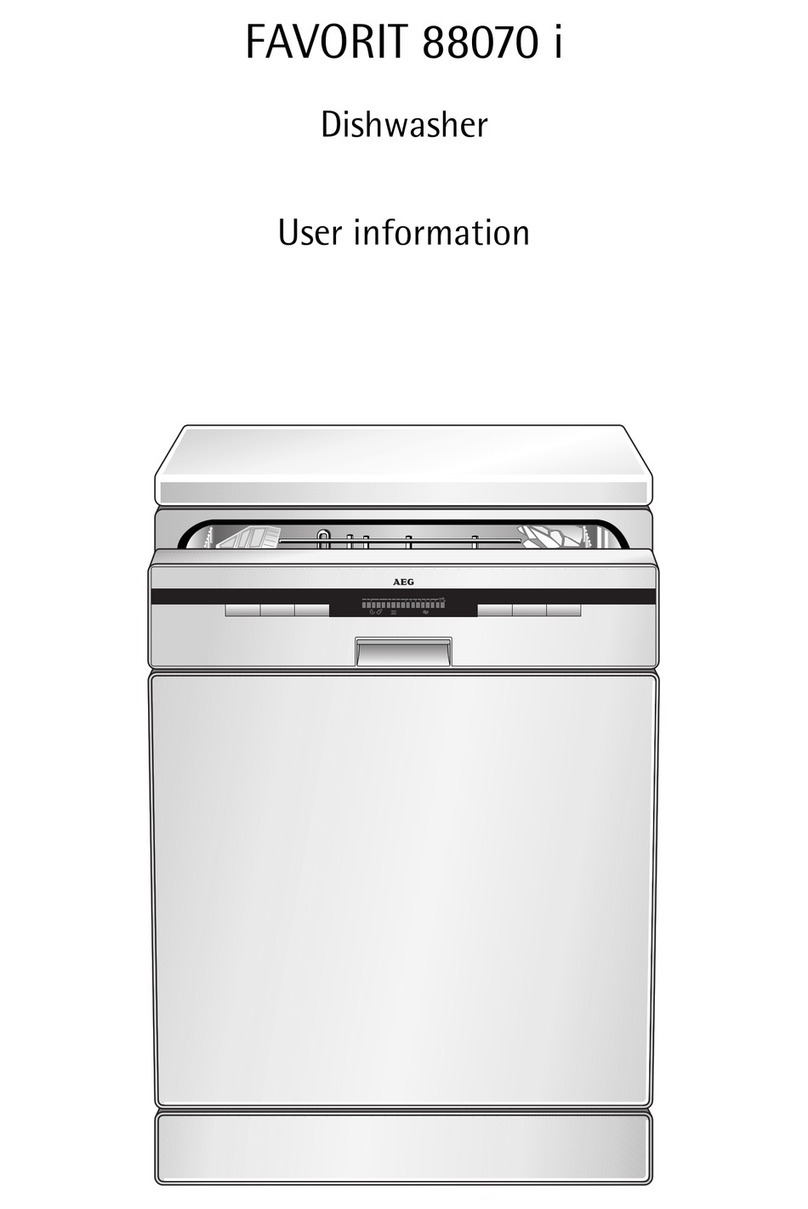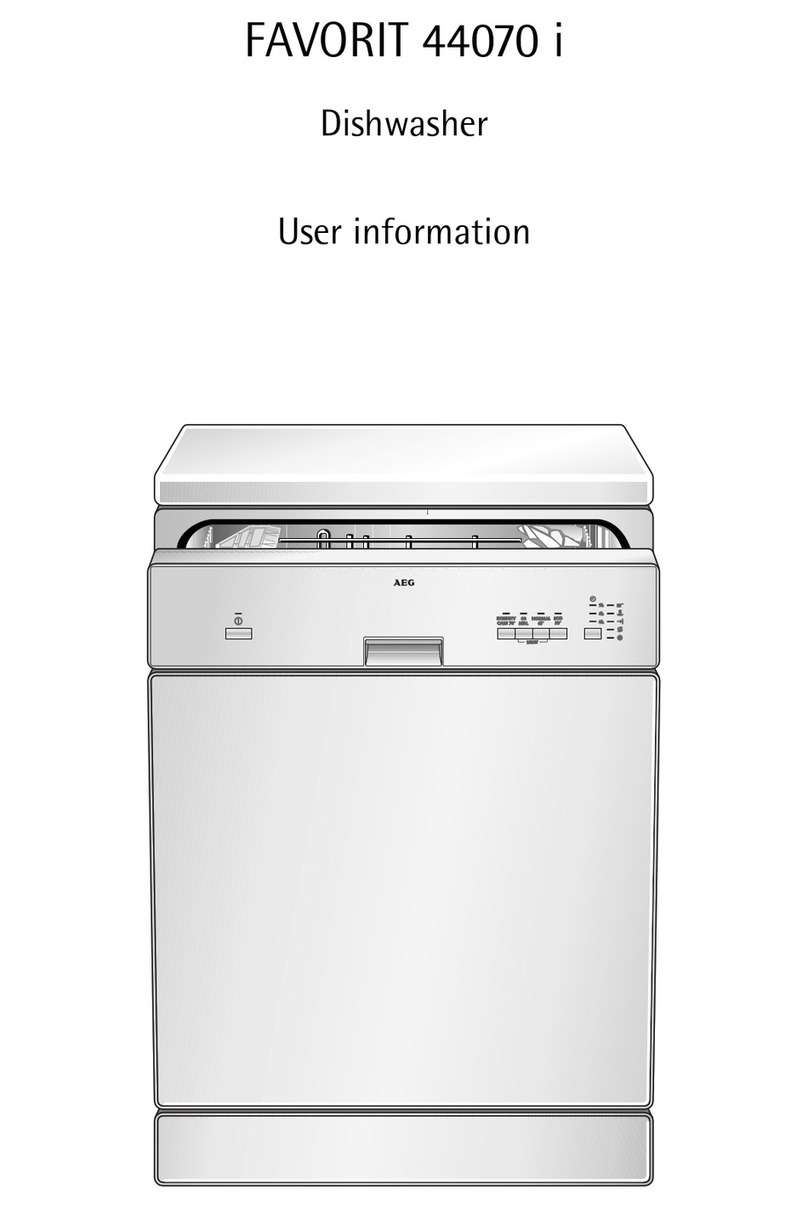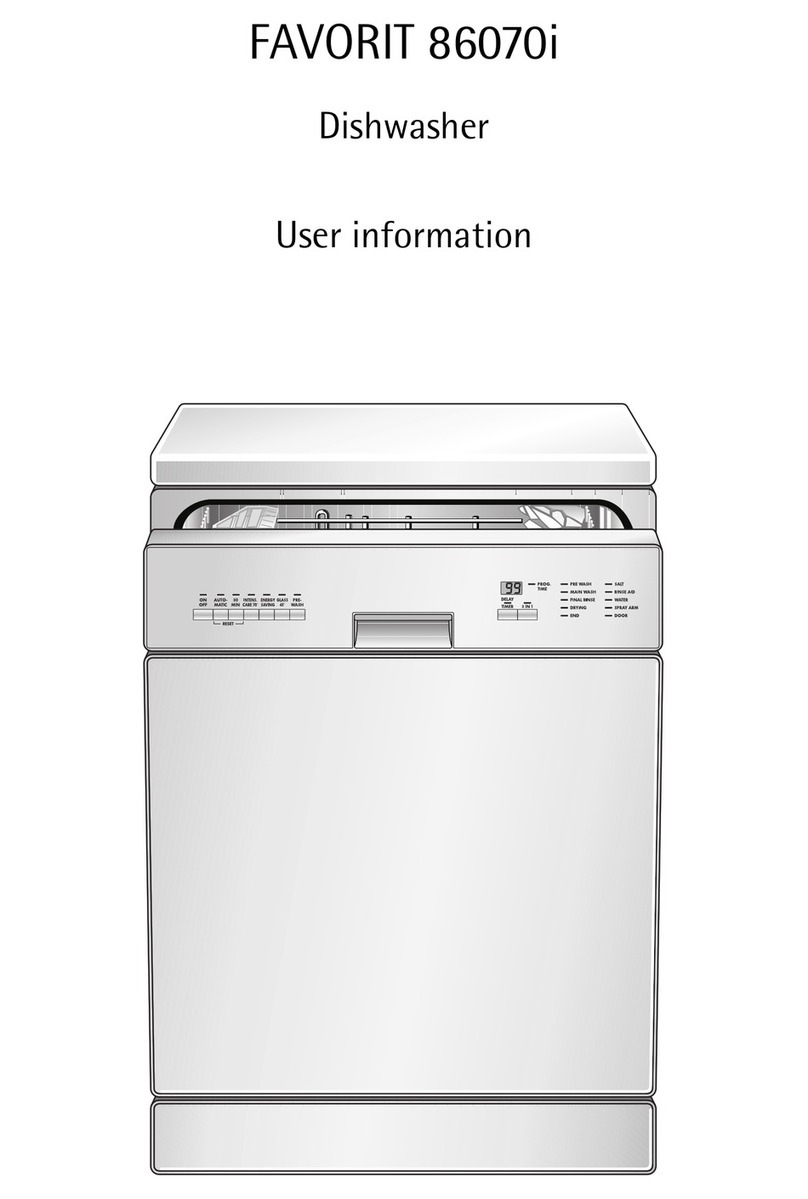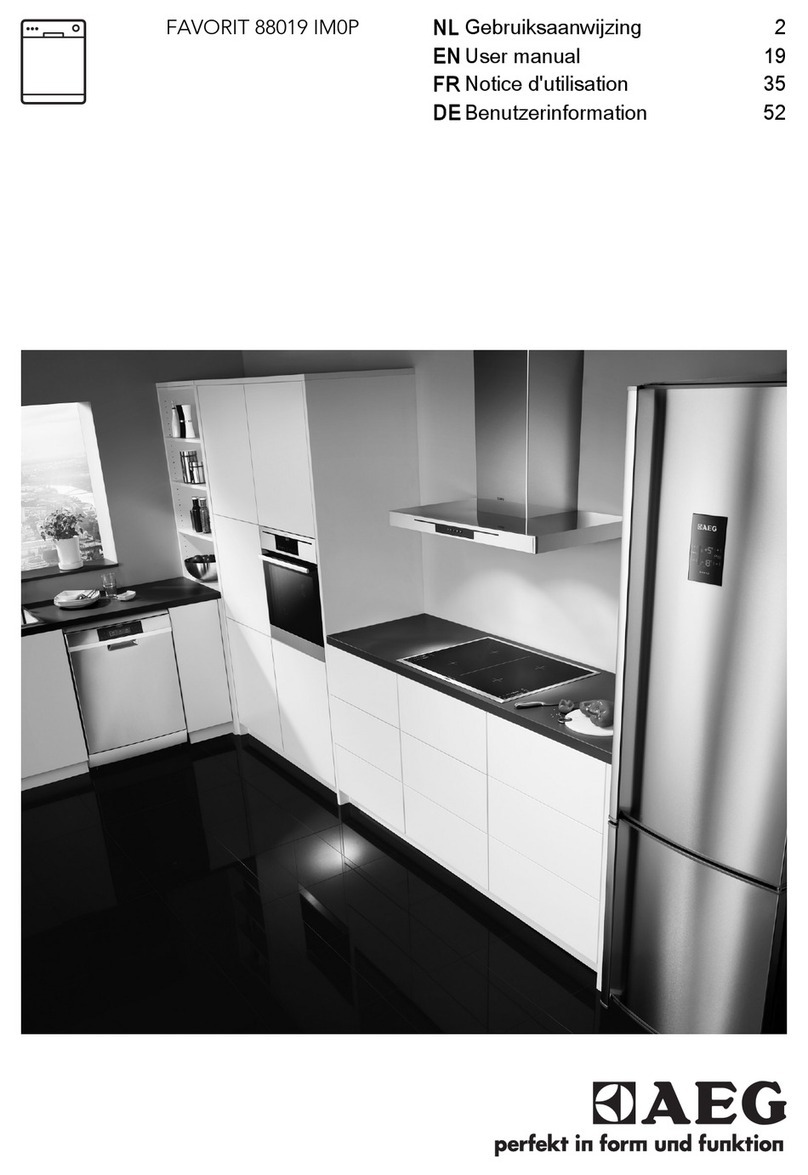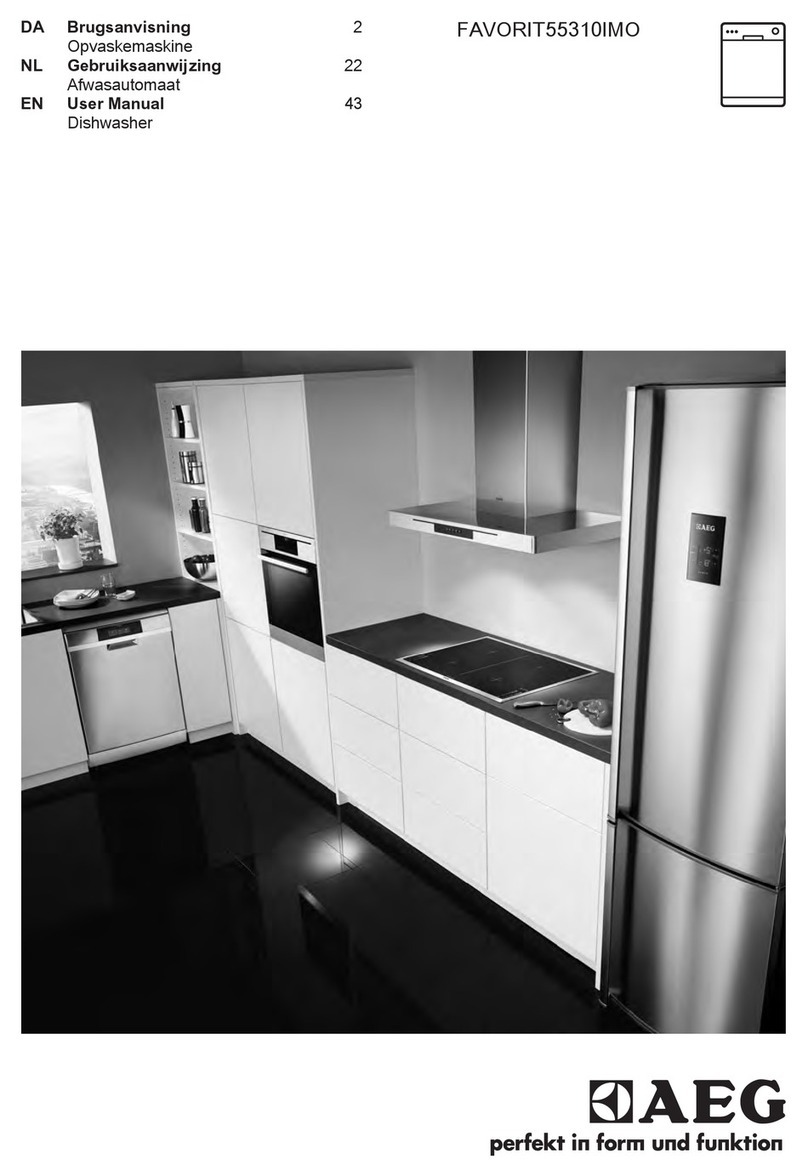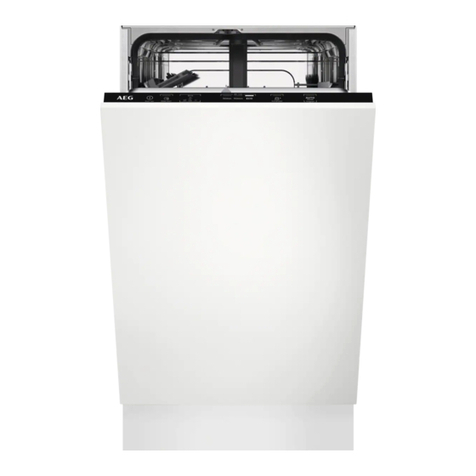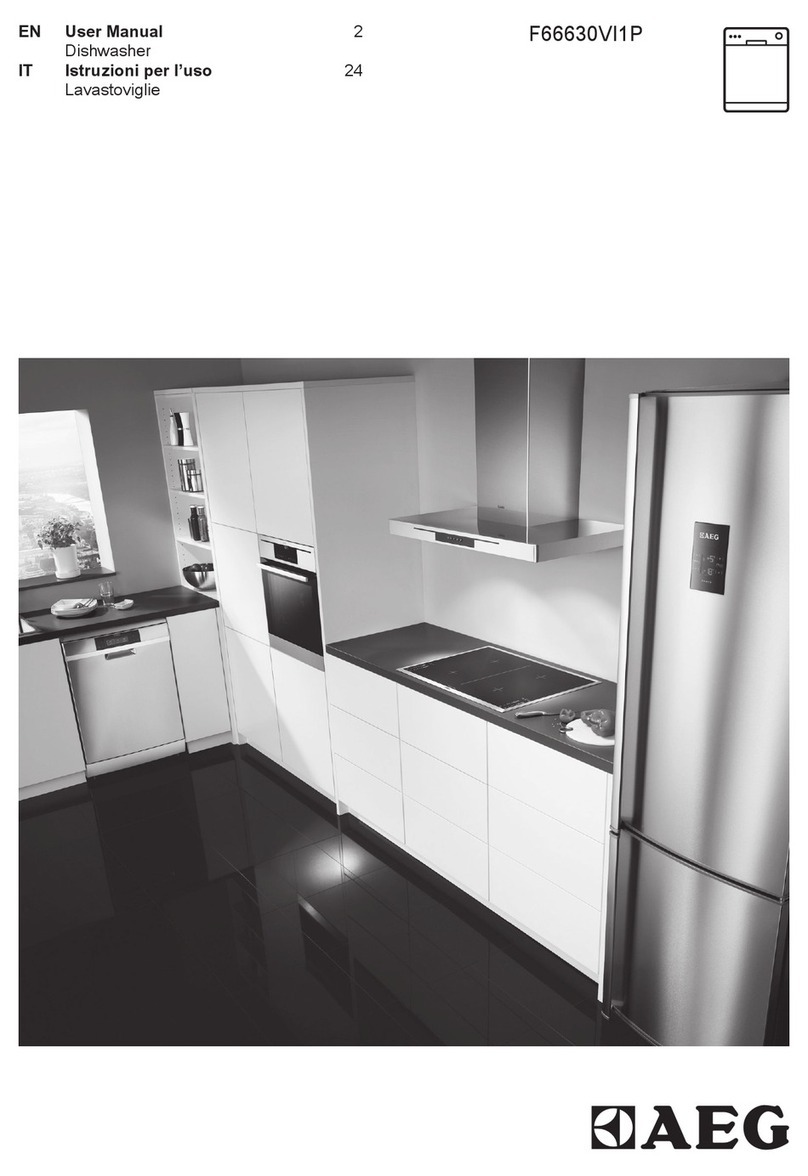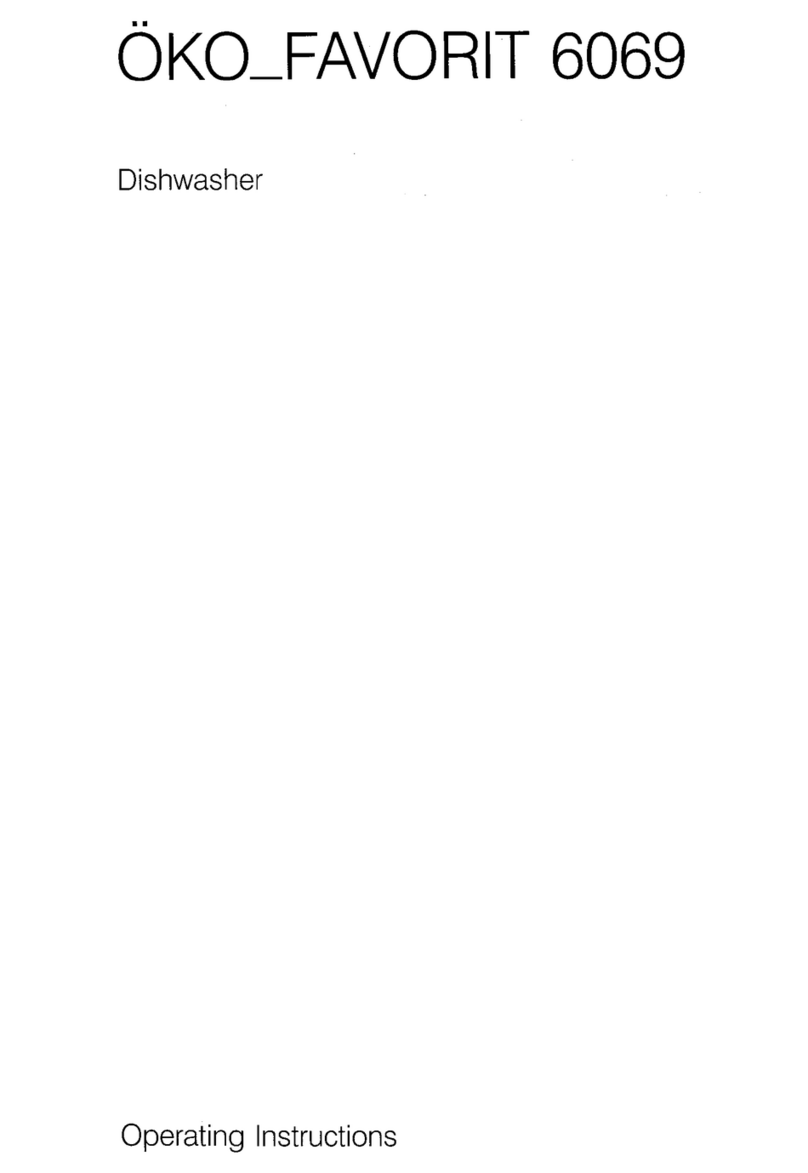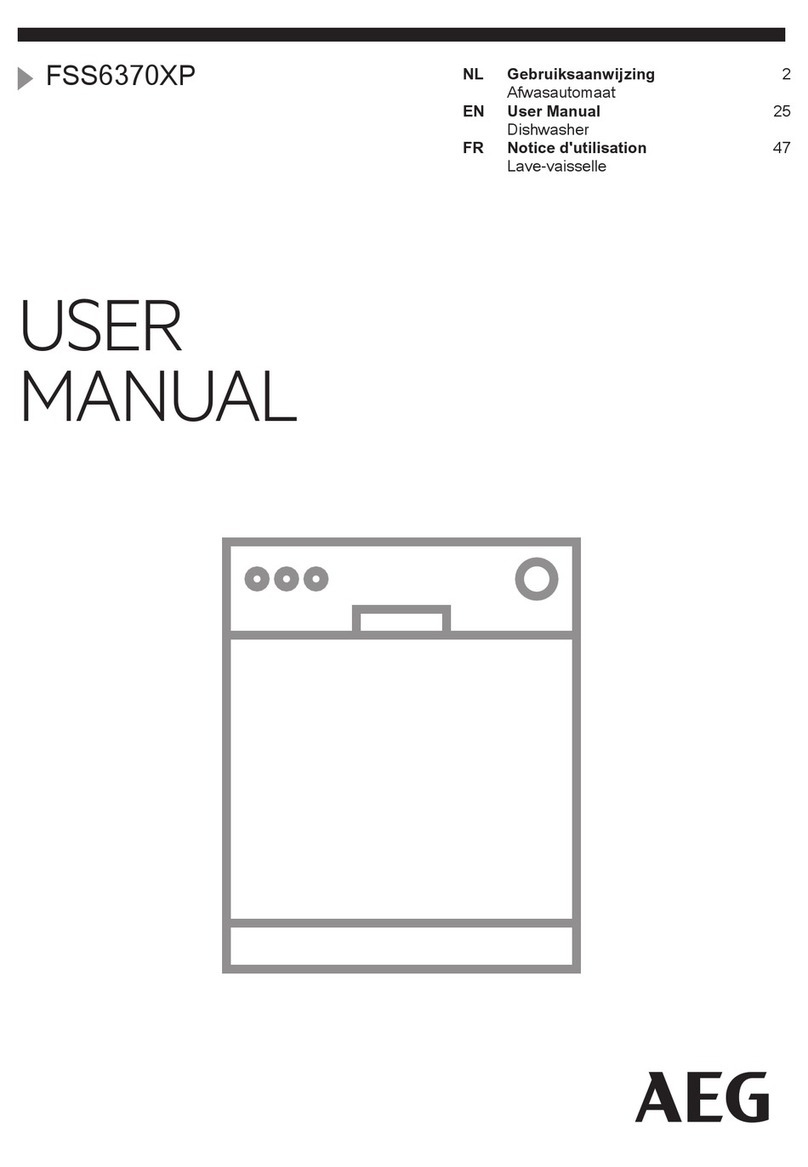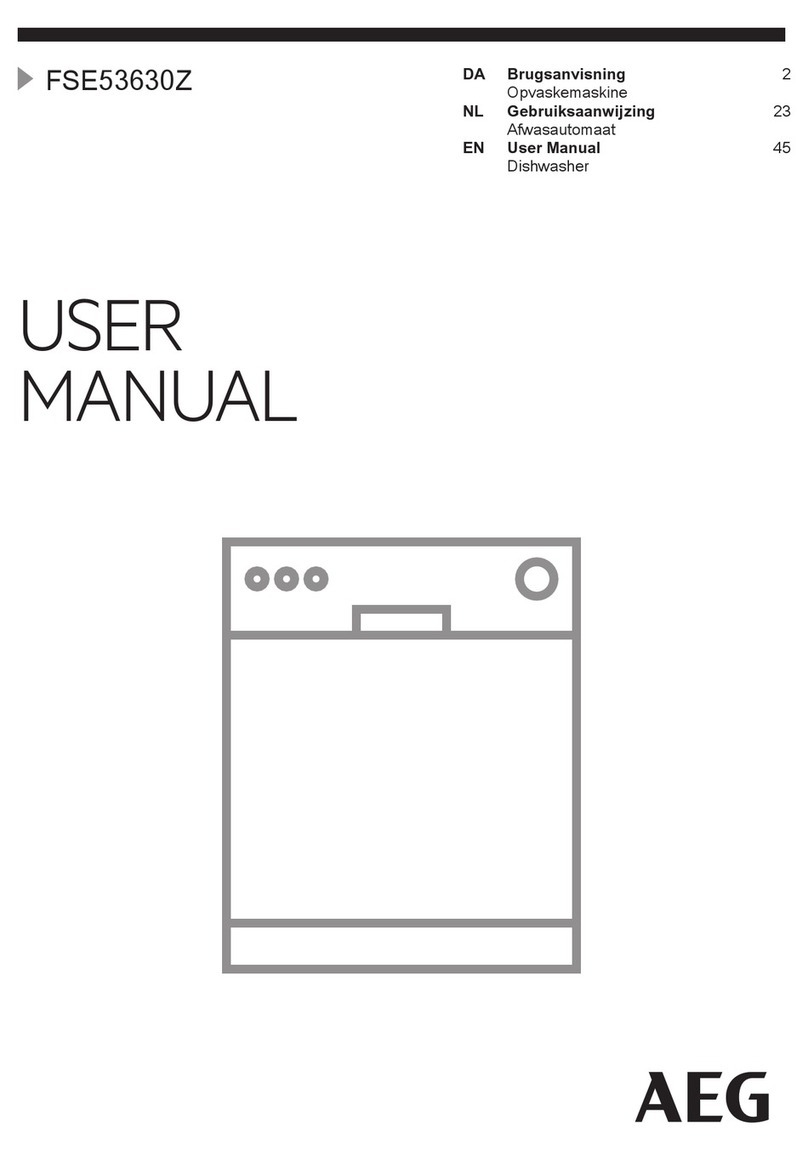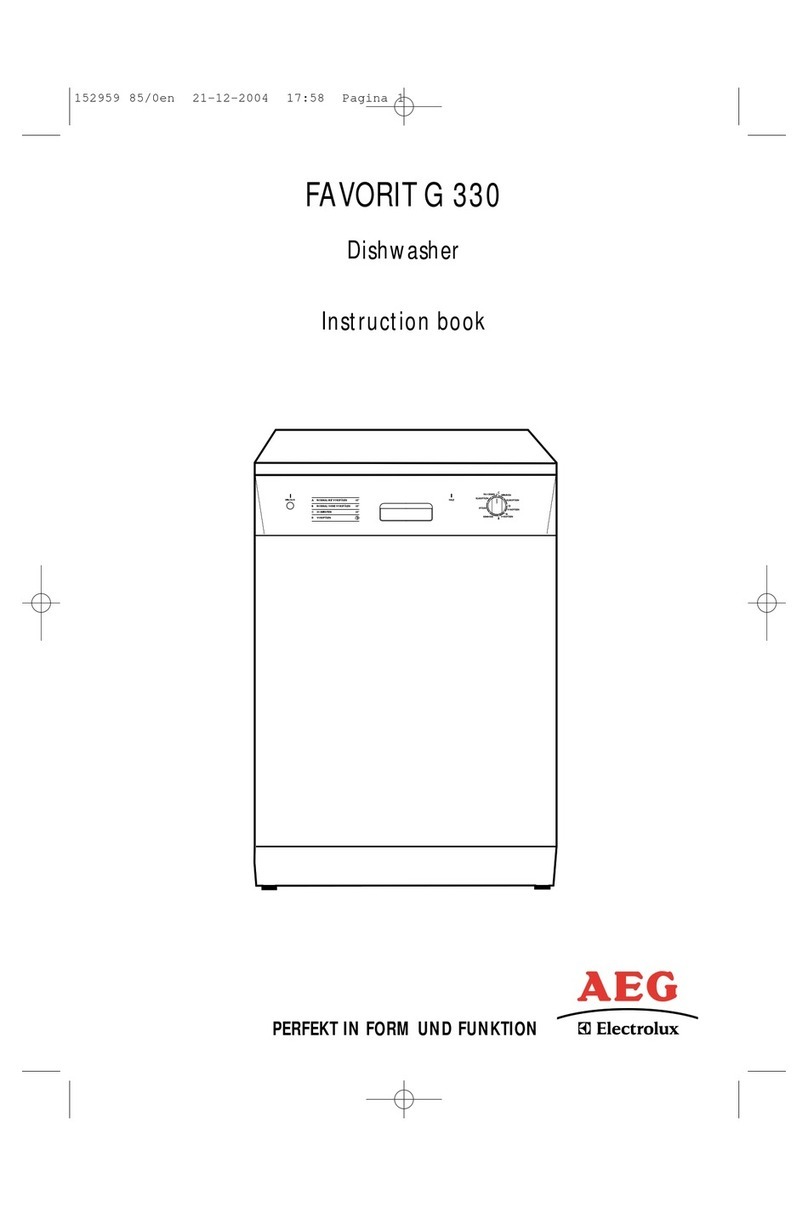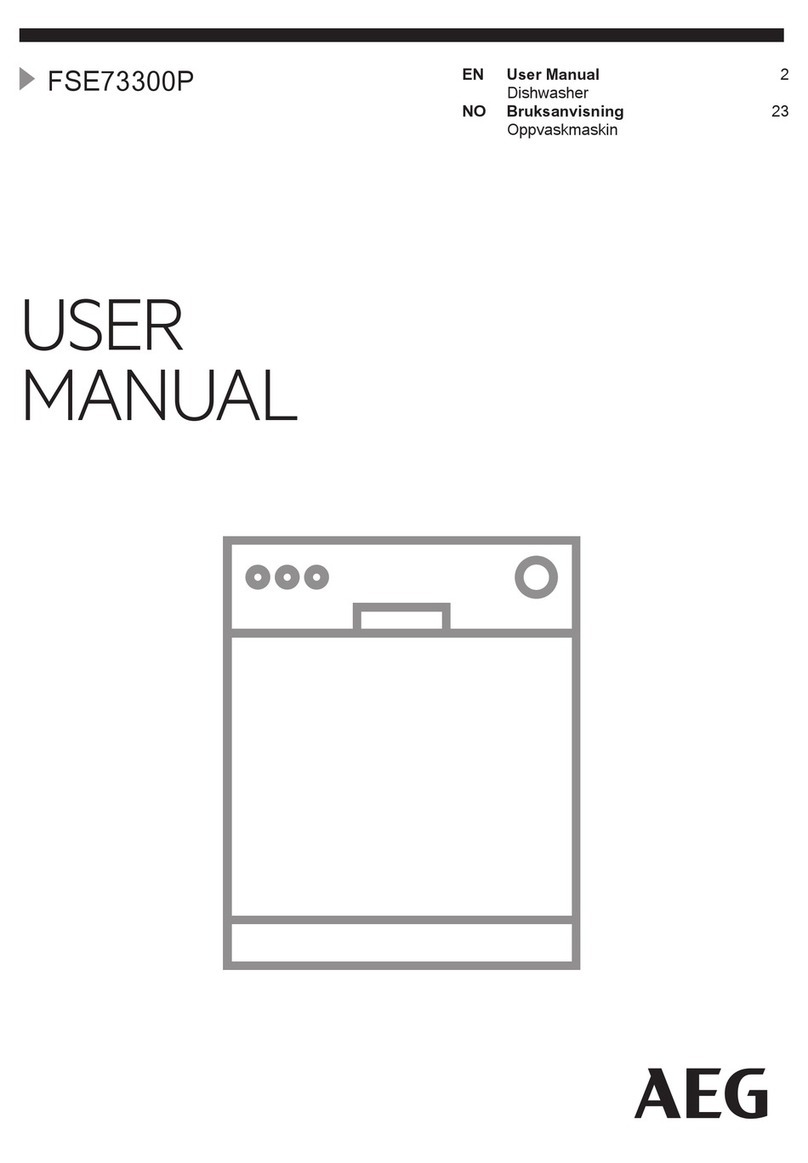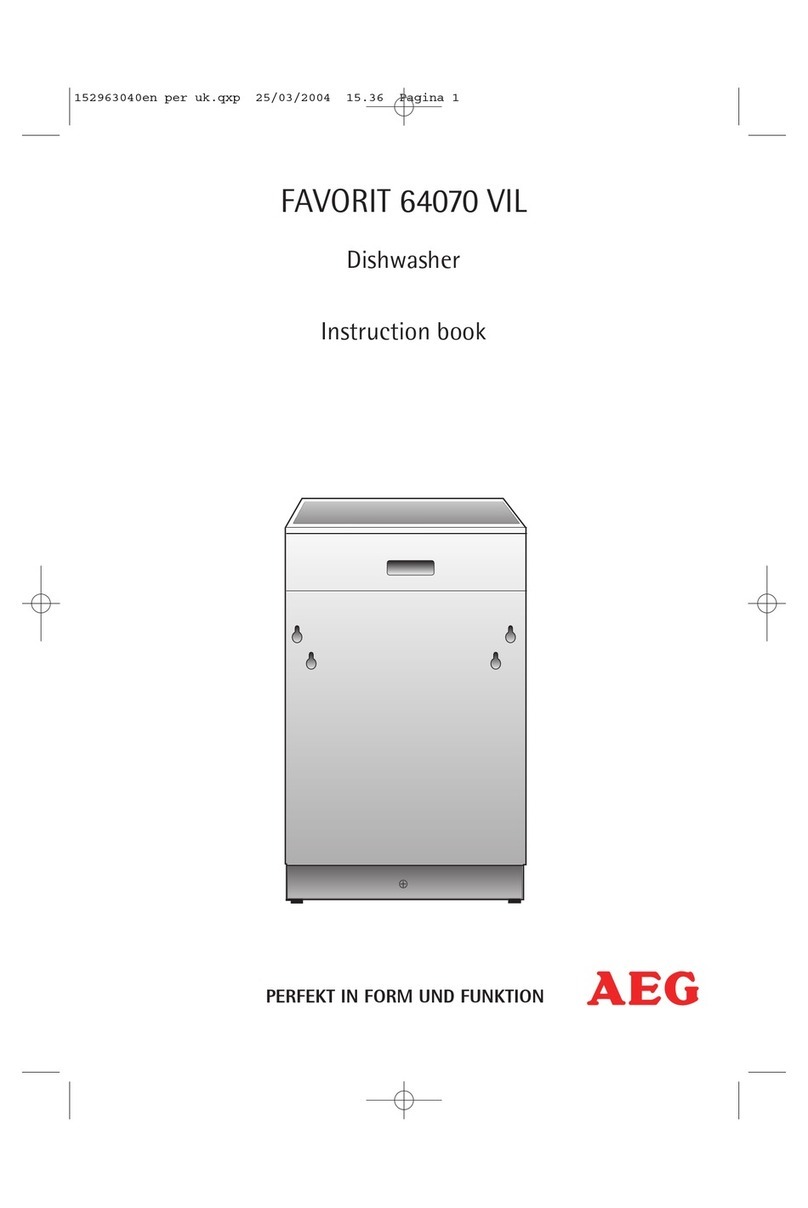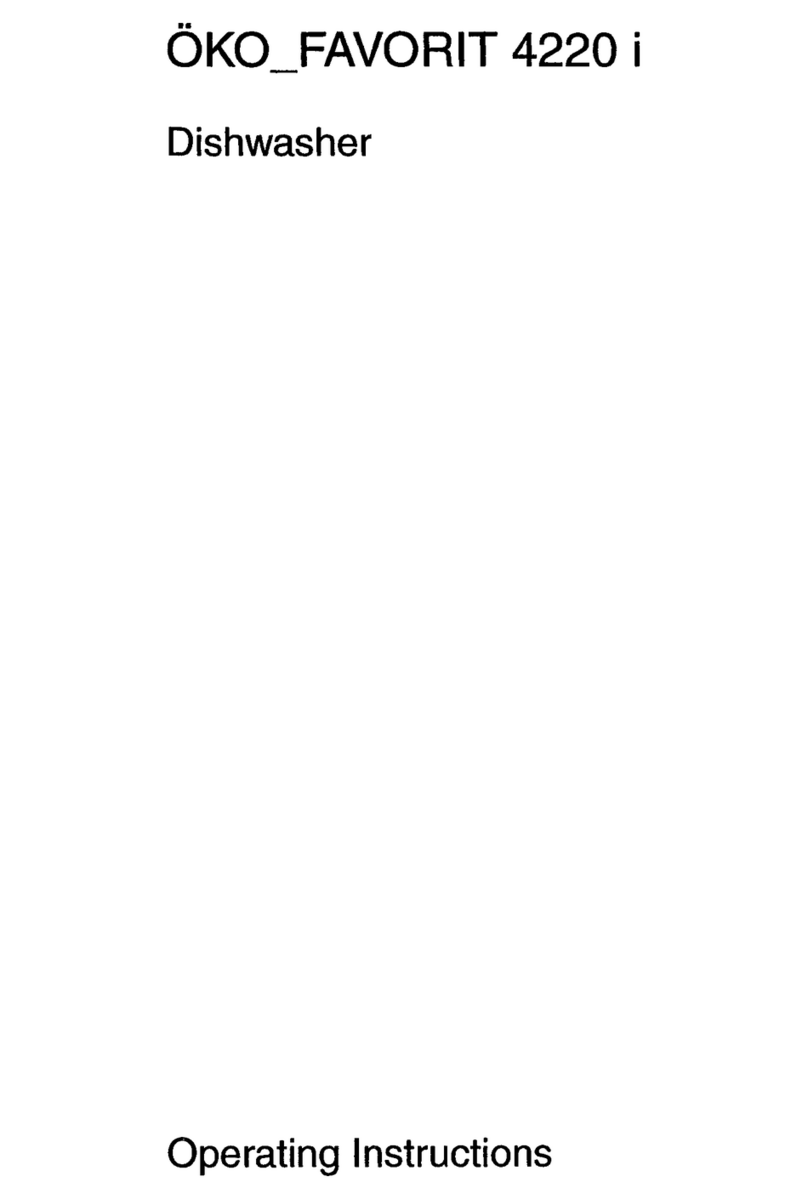
Make sure that there is access to the
mains plug after the installation.
• Do not pull the mains cable to disconnect
the appliance. Always pull the mains plug.
• This appliance is fitted with a 13 A mains
plug. If it is necessary to change the mains
plug fuse, use only a 13 A ASTA (BS
1362) fuse (UK and Ireland only).
2.3 Water connection
• Do not cause damage to the water hoses.
• Before connection to new pipes, pipes not
used for a long time, where repair work
has been carried out or new devices fitted
(water meters, etc.), let the water flow until
it is clean and clear.
• Ensure that there are no visible water
leaks during and after the first use of the
appliance.
• If the water inlet hose is damaged,
immediately close the water tap and
disconnect the mains plug from the mains
socket. Contact the Authorised Service
Centre to replace the water inlet hose.
• Without electrical power, the water
protection system is not active. In this
case there is a risk of flooding.
• The water inlet hose has a safety valve
and a sheath with an inner mains cable.
WARNING!
Dangerous voltage.
2.4 Use
• Do not put flammable products or items
that are wet with flammable products in,
near or on the appliance.
• Dishwasher detergents are dangerous.
Follow the safety instructions on the
detergent packaging.
• Do not drink and play with the water in the
appliance.
• Do not remove the dishes from the
appliance until the programme is
complete. Some detergent may remain on
the dishes.
• Do not store items or apply pressure on
the open door of the appliance.
• The appliance can release hot steam if
you open the door while a programme
operates.
2.5 Service
• To repair the appliance contact the
Authorised Service Centre. Use original
spare parts only.
• Please note that self-repair or non-
professional repair can have safety
consequences and might void the
guarantee.
• The following spare parts will be available
for 7 years after the model has been
discontinued: motor, circulation and drain
pump, heaters and heating elements,
including heat pumps, piping and related
equipment including hoses, valves, filters
and aquastops, structural and interior
parts related to door assemblies, printed
circuit boards, electronic displays,
pressure switches, thermostats and
sensors, software and firmware including
reset software. Please note that some of
these spare parts are only available to
professional repairers, and that not all
spare parts are relevant for all models.
• The following spare parts will be available
for 10 years after the model has been
discontinued: door hinge and seals, other
seals, spray arms, drain filters, interior
racks and plastic peripherals such as
baskets and lids.
• Concerning the lamp(s) inside this product
and spare part lamps sold separately:
These lamps are intended to withstand
extreme physical conditions in household
appliances, such as temperature,
vibration, humidity, or are intended to
signal information about the operational
status of the appliance. They are not
intended to be used in other applications
and are not suitable for household room
illumination.
ENGLISH 5
